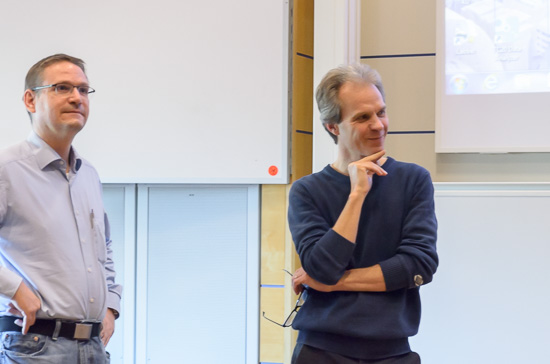
Idag hade SACT ordnat Tandem Talk. Talarna var Dennis Hasselquist och Wolfgang Knecht. Nytt för dagen (?) var att (mer …)
Biologiska institutionen | Lunds universitet

Idag hade SACT ordnat Tandem Talk. Talarna var Dennis Hasselquist och Wolfgang Knecht. Nytt för dagen (?) var att (mer …)
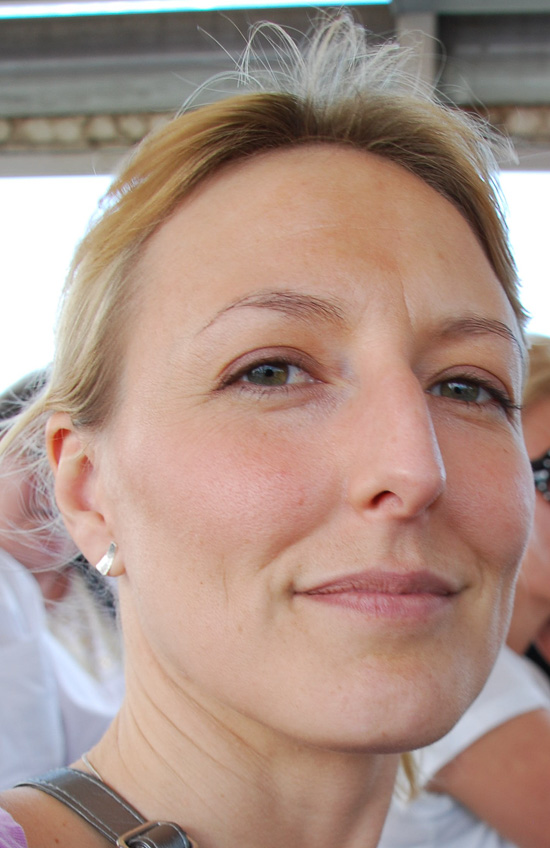
I am very happy to join the Lund Protein Production Platform (LP3) team. Throughout my research career I have been working on structural and functional characterization of membrane proteins. I did my graduate studies in Gothenburg where I primarily investigated aquaporins (in particular overproduction and crystallization methods). I then moved to Århus, Denmark, studying Na,K-ATPases and became acquainted with low-resolution structure determination approaches. Leaving Århus, I started as a post-doc at Novo Nordisk in Copenhagen focusing on an ion-channel protein. My most recent employment was here at Lund University, at the Biochemistry department, working with membrane protein-membrane/soluble protein interactions in the structural biology group of Susanna Törnroth-Horsefield.
At LP3, I will now be responsible for the crystallization facility: maintenance, assisting users, etc. Do not hesitate to contact me if you are interested in using the facility – we can then discuss how to best approach your target. See you around!
It seems like it is time to write a small explanation about how you find your way around our websites.
Our web pages are divided into external and internal websites in both (mer …)
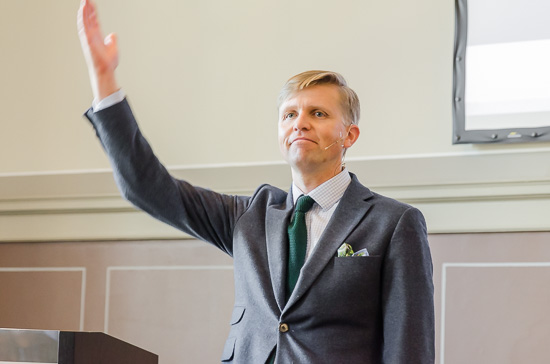
Igår hade Emma Kritzberg och Johannes Rousk ordnat en struktur- och tidsworkshop med struktören David Stiernholm för institutionens (mer …)
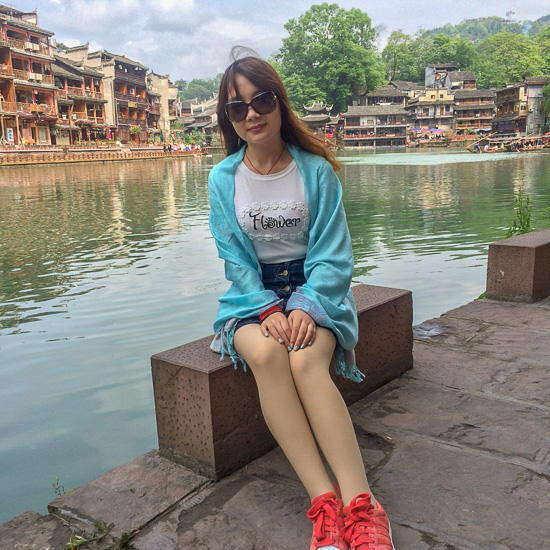
My name is Jing Zhang and I am a joint-training PhD student from China. My doctoral major is ecology and my research direction is ecosystem ecology. I am very happy to join the Microbial Ecology group to research the relationship between mycorrhizal and soil organic carbon under Håkan Wallander’s direction.
My PhD project is “Arbuscular mycorrhizal fungi resource and its contribution to soil organic carbon in subtropical forests in southern China”. Therefore, my research is focus on mycorrhizal biomass, diversity and glomalin-related soil protein, soil microbial community structure, and the contribution of arbuscular mycorrhizae to soil organic carbon sequestration in natural tropical forests and under climate change scenario. I have done these works in southern China during the first two year of my PhD period. Now I will study in LU for 18 month to research how to use isotope to study mycorrhizae under natural geothermal soil temperature gradients in Iceland. After finish my research here, I will go back to China and get my PhD degree.
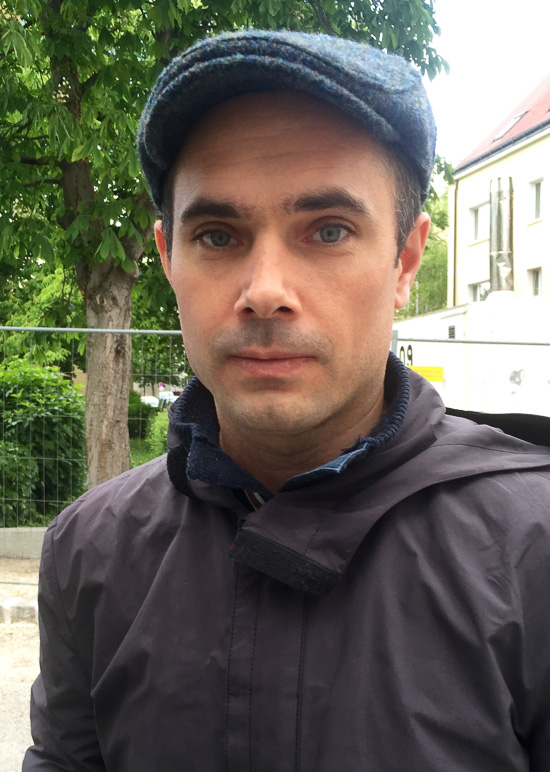
I am very happy to join the Department of Biology and the Theoretical Population Ecology and Evolution Group as a postdoc to work primarily with Per Lundberg and Jörgen Ripa on speciation and biological diversification in multitrophic communities.
I received my master’s degree from Umeå University with a thesis on rainforest biodiversity in relation to disturbances. I received my PhD in Ecology 2014 from Umeå University where I studied ecological and evolutionary dynamics in spatially structured communities. I was thereafter a postdoc scholar with the Evolution and Ecology Program at the International Institute for Applied Systems Analysis (IIASA) in Austria, where I studied mainly the evolution of cooperation in large group-structured communities.
In my postdoc project here we aim to apply a combination of mathematics and data analysis to learn more about speciation and biological diversification in spatially-structured multitrophic communities with high
interspecific interaction-strengths.
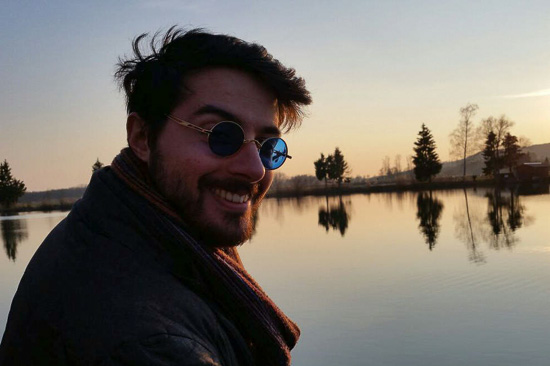
Hej! My name is Alfredo Rago and I am an Italian post-doc. I have just joined the Uller lab after finishing my PhD on the regulatory basis of sexual dimorphism at the University of Birmingham (UK). So far I’ve used wasps (Nasonia vitripennis) and water fleas (Daphnia magna), which lack sex-chromosomes, to investigate how phenotypic differences are induced in genetically identical individuals. The project involved the analysis of developmental gene expression time-series data of both sexes via network reconstruction.
My research focuses on expanding our understanding on how regulatory networks evolve by integrating genomic, transcriptomic, developmental and environmental factors. This generally means reconstructing large heterogeneous regulatory networks from experimental data and analysing how their structure changes under specific circumstances to find which elements are most likely to be subject to change and whether these changes have a biased potential towards adaptiveness.
My current project is to develop a novel framework for the understanding of plasticity by using simulations to model environmental effects as intrinsic component of developmental regulatory networks. The project will involve a collaboration with the Watson Lab in the University of Southampton. My intent is to explore how developmental systems evolve by integrating environmental and genetic information, potentially devising methods to predict and identify the architecture of plastic traits.
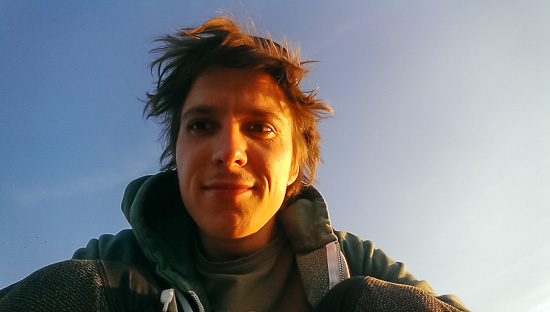
Hej! My name is Raphael and I am from Germany (or rather, Bavaria). After my Bachelor’s in Biology, I graduated in aquatic ecology at the
Ludwig-Maximilians-Universität Munich (LMU) Graduate School for Evolution, Ecology and Systematics where I investigated the diversity dependence of light-use efficiency in phytoplankton communities. My scientific focus is on plankton ecology, regarding the implications of biodiversity and community assembly on ecosystem functioning, particularly concerning the role of functional trait dynamics in phytoplankton communities and their environmental feedback effects. Besides topics in experimental aquatic ecology, I spent time on stochastic processes in population genetics of introduced species and genomic
variation in general.
I am now looking forward to working on my PhD project ‘Next-Generation
microbial population genetics using single-cell genomics’ within the EU H2020 Marie Skłodowska-Curie Innovative Training Network SINGEK. Together with my supervisors Karin Rengefors and Dag Ahrén, I will be focusing on genomic variation and dispersal patterns in the invasive microalgal species Gonyostomum semen (Raphidophyceae). By investigating the differentiation among populations of this phytoplankton species that is known to cause nuisance algal blooms, I would like to contribute to exploring the implications of ecologically relevant biodiversity on a population genomic basis utilizing single-cell genomic amplification methods.
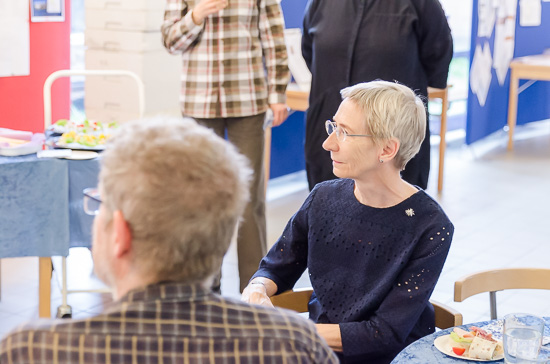
Den 29 september uppmärksammades Cecilias långa gärning vid Lunds universitet med ett avtackningsmingel i Ekologihusets foajé. Det var många (mer …)
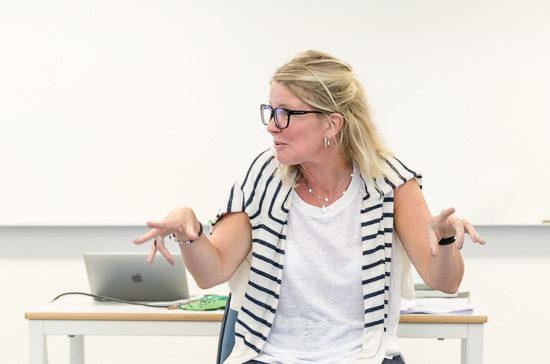
Igår hade Jämställdhetsgruppen och SACT (gruppen för vetenskapliga och sociala aktiviteter) ordnat en workshop om härskartekniker. De hade bjudit in Katarina Billing från MiL att (mer …)
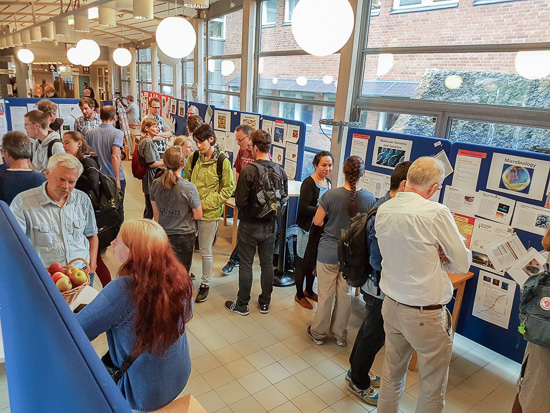
As every autumn we had the Education Fair (29 Sept.) During lunch the students had the possibility to plan and discuss their education together with the teachers and program coordinators. And in the afternoon there was information about the Bachelor´s program, the PhD program and Exchange studies.
Text and photo by Jep Agrell
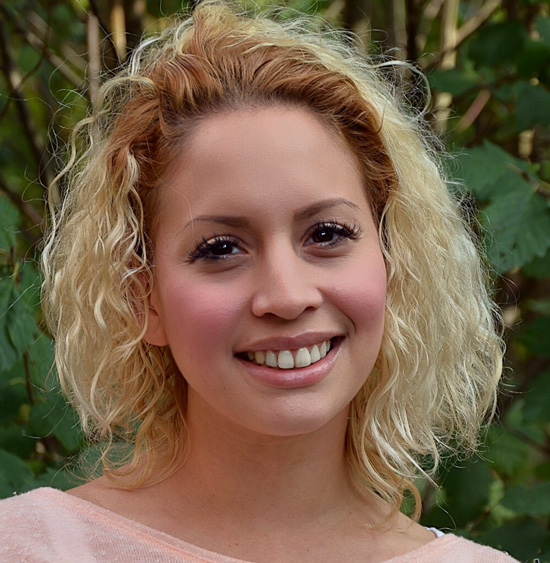
My research passion lies in chemical ecology and vector control. My current post-doctoral research involves understanding the attraction of hematophagous insects to blood sources. I will look into olfactory cues used in blood feeding through the use of both chemical ecology and molecular biology.
I received my M.Sc. from London School of Hygiene and Tropical Medicine where I had the opportunity to work on a project based in Brazil where I studied the chemical ecology between sugar sources and sandflies. This led to conducting my PhD studies in the Chemistry and Biotechnology Department at the Federal University of Alagoas in Brazil. Throughout my PhD studies I investigated the olfactory cues that attract Stomoxys calcitrans to livestock and sugarcane mills. In addition to my main project I also had the opportunity to collaborate in other research projects, which led to me joining Marcus Stensmyr’s group at Lund University.
Kommentarer